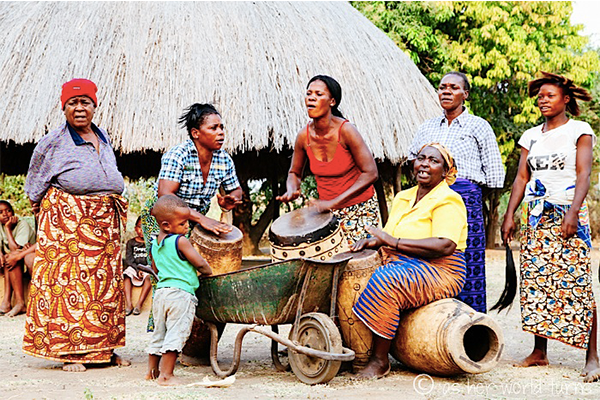Traditional Zambian music is rooted in the beliefs and practices of Zambia’s various ethnic groups and has suffered some decline in the last three decades.[1] Traditional Zambian music once had clear ritual purposes or was an expression of the social fabric of the culture. Songs were used to teach, to heal, to appeal to spirits, and for mere enjoyment. Despite the decline of traditional music, its influences can still be heard in many of today’s Zambian musical forms. The ubiquitous African “call-and-response” can be heard in almost every Zambian song no matter what the style. Traditional drum rhythms and polymeters are evident in many different kinds of Zambian music. Contemporary popular forms such as Zambian Kalindula also exhibit traces of traditional music in the finger-picking style used by guitarists.
Christian Music
Popular influences can also be heard in the newer repertory, some of which is borrowed from urban contemporary gospel, some from so-called “contemporary Christian music” from the United States, and some from Zambian popular idioms. The use of electronic synthesizers and guitars has also made its way into the church. The flow of influence between church music and the popular realm can also be heard in recordings by groups such as Lumbani Madoda, Zambian Acapella, Lota House and Hosanna Band which has been disbanded.
The influence of Euro-American hymnody is also evident in the music of many Zambian congregations. Hymns from British and American hymnals continue to be part of the musical fabric of many churches, and many harmonic practices are derived from Western hymn influences. Invented by John Curwen, the system Tonic Sol-fa was imported into Africa by the British in the nineteenth century. The Heritage Singers Choir, the Heritage Brothers Quartet, and church helped popularise this form of harmonious music worldwide.




